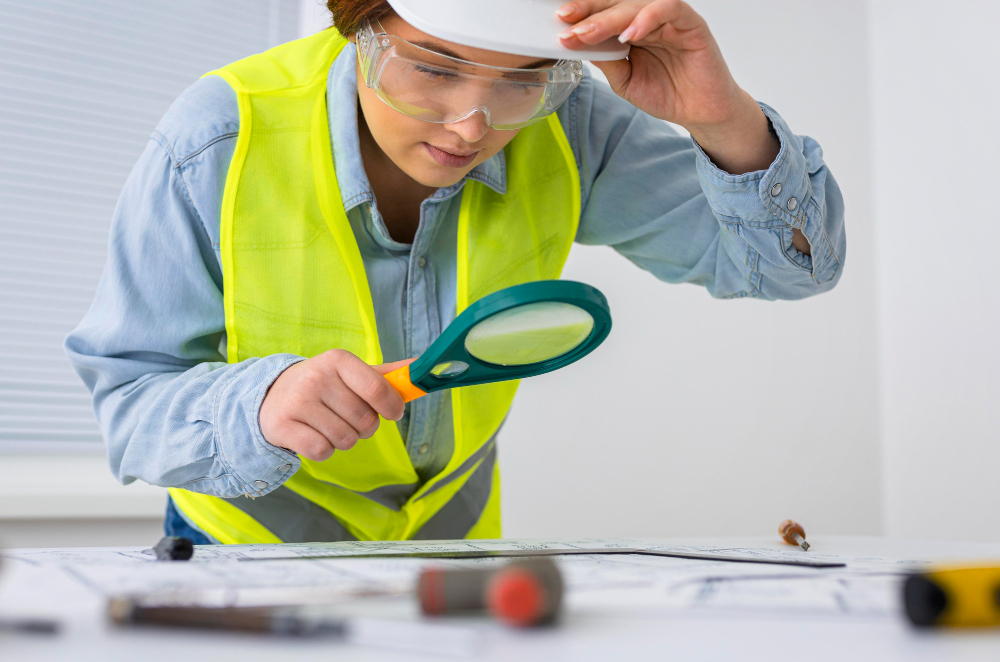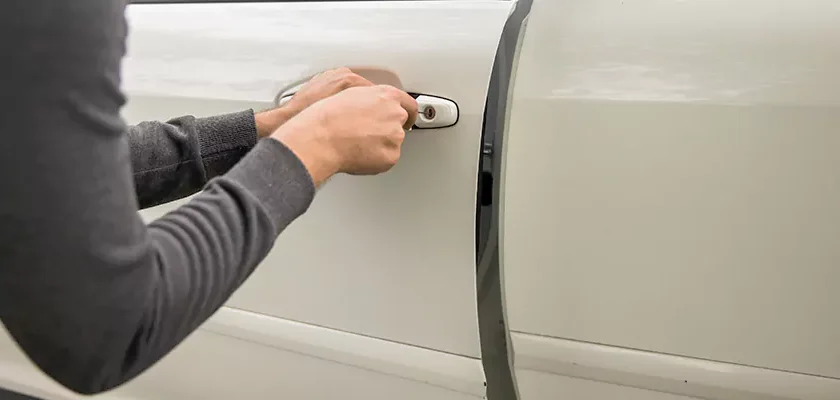Asbestos is a naturally occurring fibrous mineral that was heavily used as an insulating and fireproofing material in buildings and construction products in the early-to-mid 20th century. At the time, asbestos seemed like a miracle material – it was durable, fire-resistant, and inexpensive. However, we now know that asbestos exposure can lead to serious health risks including lung cancer, mesothelioma and asbestosis. This makes Asbestos testing incredibly important for your health and safety if you live or work in an older building that may contain asbestos materials.
What is Asbestos and Why is it Dangerous?
Asbestos refers to a group of six naturally occurring fibrous silicate minerals that were mined for their useful properties such as high tensile strength, flexibility, resistance to chemical and thermal degradation, and electrical and acoustic insulation. The most common types of asbestos that were used commercially are chrysotile, amosite and crocidolite.
When asbestos materials age or become damaged, they can release tiny microscopic fibers into the air. These thin asbestos fibers are easily inhaled and can lodge deep into the lungs. Over time, the accumulation of asbestos fibers can cause inflammation, scarring and genetic damage that can eventually lead to serious health issues like:
- Asbestosis – A chronic lung disease characterized by shortness of breath. The scarring caused by inhaled asbestos fibers restricts lung expansion, making breathing progressively more difficult over time.
- Lung Cancer – Asbestos exposure is known to increase the risk of lung cancer, especially when combined with cigarette smoking. The more asbestos a person is exposed to, the higher their risk of developing lung cancer.
- Mesothelioma – A rare and aggressive type of cancer that affects the lining of the lungs, abdomen or heart. Mesothelioma is almost exclusively caused by asbestos exposure.
- Other Cancers – Evidence suggests asbestos exposure may increase risks of laryngeal and ovarian cancer as well.
That’s why asbestos is considered so hazardous – when its fibers are inhaled, they can remain lodged in the body for decades and slowly cause cellular damage that leads to serious, often fatal health conditions.
Where is Asbestos Commonly Found?
In the past, asbestos was widely used in many construction materials and insulation products because of its affordability and versatile properties. Some common places asbestos can be found in older buildings include:
- Insulation – Asbestos was commonly used to insulate pipes, boilers, tanks, ducts, ceilings, walls and attics to provide fireproofing and thermal insulation. Vermiculite attic insulation often contained asbestos as well.
- Roofing and siding – Asbestos cement sheets and shingles were frequently used as roofing and exterior wall cladding.
- Flooring – Vinyl asbestos tiles were very common flooring in schools, hospitals and commercial buildings. Asbestos may also be found in the mastic holding tiles down.
- Wall and ceiling materials – Asbestos containing “popcorn” ceilings and plaster were popular for fireproofing and insulation. Joint compounds used for walls also occasionally contained asbestos.
- Cement products – Asbestos fibers were often added to cement, cinder blocks and other masonry materials for strengthening.
- Automotive products – Brake pads, clutch facings, gaskets and other automotive products like firewall insulation could contain asbestos materials.
Even products not made with asbestos purposefully may have become cross-contaminated with asbestos during mining, manufacturing or construction. This makes it very challenging to identify asbestos visually – testing is the only way to know for sure.
Why is Asbestos Testing Important?
There are a few key reasons why testing for asbestos by an experienced professional is extremely important if you have an older home or work in an aged building:
1. Asbestos exposure risks increase with age and damage. While intact asbestos materials generally do not pose a health risk, the older they become, the more likely they are to incur damage, wear or deterioration that causes the hazardous fibers to be released into the air. So even if asbestos is present but seems to be in good condition currently, it’s important to identify it so steps can be taken to carefully remove or encapsulate it before fibers start becoming airborne.
2. There are often no obvious signs of asbestos. You cannot identify asbestos just by sight – the only way to confirm its presence is through testing. Unlike mold, there is no visible growth, discoloration or obvious signs that indicate asbestos. It may be completely concealed in walls, flooring, insulation or other materials. The lack of obvious indicators makes comprehensive testing essential.
3. Disturbing asbestos releases fibers. Any activities like sanding, breaking, cutting or drilling materials containing asbestos can release the hazardous fibers into the air where they can be inhaled. It’s crucial to know if asbestos is present in a building before doing renovation or maintenance work to avoid unsafe exposure.
4. Early detection can prevent health issues. If asbestos materials can be identified early, steps can be taken to properly remove them and prevent fiber release. Detecting and mitigating asbestos exposure risks early is key to reducing the chances of developing related lung diseases and cancers later on. Knowing where asbestos is allows you to monitor its condition and avoid unsafe disturbance.
5. There are legal implications. Regulations require that building owners and employers identify and manage asbestos materials appropriately to protect occupants. There can be heavy fines and penalties for non-compliance. Testing allows owners to fulfill their legal obligations and liability.
The older a home or building is, the more likely it is to contain asbestos. Performing thorough testing as soon as possible provides peace of mind that any risks have been identified and can be proactively managed or removed by trained professionals. This knowledge and early action helps protect your health and safety.
Asbestos Inspection Process
Comprehensive asbestos testing is performed by qualified asbestos inspectors and involves carefully collecting samples to be analyzed by an accredited laboratory. Here is an overview of the asbestos inspection process:
Initial Survey
- The inspector tours the entire property taking notes about the building’s age, materials used, current condition, previous renovations or repairs, and more. They will look for any obvious signs of damage or deterioration.
- All systems and areas are documented, including roof, walls, flooring, insulation, crawlspaces, basements, attics, HVAC systems, fireproofing, etc.
- The inspector identifies homogeneous areas – these are areas that appear to have the same age, type and condition of material throughout. Each homogeneous area will need a sample.
- Building records like construction blueprints may provide clues about where asbestos could be present. Owners are asked about any renovations done and materials used.
Sampling
- The inspector determines how many samples need to be collected based on the number of homogeneous areas identified.
- Small pieces of materials are carefully collected using specialized tools and methods to minimize fiber disturbance. Proper safety protocol is always followed.
- An accredited laboratory will require a certain sample size for analysis, usually around dime-size for solid materials. The inspector collects multiple samples when feasible in case any get damaged.
- The location, type and condition of each sample is carefully documented. Each has a unique identification code tied to its record.
- Samples are sealed in sterile containers and shipped to the accredited lab for analysis. Chain of custody procedures maintain sample integrity.
Analysis
- At the laboratory, each sample is prepared and examined under high powered microscopes by qualified technicians able to identify asbestos fibers.
- There are various analytical methods for detecting asbestos including Polarized Light Microscopy, Phase Contrast Microscopy, Transmission Electron Microscopy, infrared spectroscopy and others.
- Labs adhere to stringent quality control procedures and requirements to ensure accuracy of results.
- Samples are analyzed and each is classified as either containing asbestos or being negative for asbestos presence. The type and approximate percentage of asbestos is identified.
Interpreting Results
- The inspector reviews the lab results and pairs them back up to the original sampling locations and materials.
- Areas tested where asbestos was detected are classified as asbestos containing materials (ACMs).
- An asbestos inspection report is generated that summarizes the initial observations, sampling methodology, laboratory results, a list of confirmed ACMs and their locations, recommended response actions, and general instructions for asbestos management.
- Building owners use this report to help ensure ACMs are properly handled by trained asbestos control professionals to reduce risks and comply with all regulations. Annual inspections monitor ACM condition.
As you can see, asbestos testing is a very meticulous process requiring expertise in asbestos identification, safe sampling methods and interpretation of results. Relying on unqualified individuals putting your health at risk by improperly collecting or analyzing materials could lead to false results, so be sure to use experienced and licensed asbestos inspectors for testing.
Typical Cost of Asbestos Testing
Asbestos testing costs will vary depending on factors like:
- Age, size and complexity of the building
- Number of homogeneous areas needing sampling
- Lab analysis methods required
- Travel costs for the inspector
- Applicable taxes and other fees
For a rough estimate, you can expect asbestos testing costs to typically range from $400-$1,000 for a small residential building. Larger commercial properties usually range from $1,000-$5,000+ depending on the square footage. Labs may charge $25-$100 per sample for analysis. Additional bulk sampling or air testing can also increase costs.
Keep in mind that asbestos testing is an important investment that provides crucial health and safety information to protect you and your family or employees from dangerous asbestos exposure. The costs upfront are worth it for the peace of mind and ability to address any issues proactively before they potentially become costly health hazards down the road.
Asbestos Removal
If testing confirms that asbestos materials are present in your home or building, the next step is determining whether it needs to be removed. There are a few factors inspectors consider:
- Material condition – The more damage, deterioration or disturbance there is to ACMs, the more removal is recommended. If materials are largely undamaged, they may recommend periodic monitoring.
- Exposure risks – How easily disturbed or accessible are the asbestos materials? High traffic areas have greater risks. Asbestos near air systems also poses great risks if fibers enter ductwork.
- Regulations – State and federal asbestos regulations dictate special handling and disposal of certain ACMs, like flooring and insulation. Reviewal by an expert is advised.
- Renovations – Any major renovations, demolitions, or additions will require removal of asbestos in affected areas. This should always be done BEFORE work begins.
Asbestos removal is a heavily regulated process that must be performed by specialized contractors using strict safety protocols. Untrained individuals should never attempt DIY asbestos removal. Once safely removed, ACMs are disposed of at designated asbestos landfills. An asbestos clearance certificate confirms work areas are safe for re-occupancy after abatement.
The costs for asbestos removal vary greatly based on factors like amount of asbestos present, abatement methods required, number of workers needed, disposal fees and more. For large asbestos abatement projects, costs can easily exceed $10,000+.
While asbestos abatement requires a hefty upfront investment, it is absolutely critical for preventing the life-threatening health hazards associated with asbestos exposure. Taking proactive steps to identify and remove ACMs in your home or workplace provides long-term health benefits that are truly priceless.
Why Use a Professional Asbestos Inspector?
Due to the significant health risks asbestos poses when improperly handled, it is extremely advisable to hire a professional, experienced asbestos inspector whenever identification or testing is needed in a home or building.
There are a few key reasons why asbestos testing and identification should not be attempted as a DIY project:
- Lack of expertise – Professionals have extensive knowledge of building materials and how to safely identify and collect samples for testing without distributing fibers.
- Improper sampling – Incorrect sampling procedures can either miss asbestos materials entirely or release fibers and put people at risk.
- Inaccurate analysis – Only accredited laboratories have the specialized equipment and expertise needed to reliably analyze asbestos content.
- Legal liabilities – Asbestos regulations require strict training and licensing for inspection and abatement. Fines and lawsuits can result from unqualified work.
- Health risks – Disturbing asbestos without precautions could endanger you and your family. Professionals utilize protective equipment and containment.
- Peace of mind – Certified asbestos inspectors provide accurate results and recommendations you can be confident in.
When identifying and handling any potential asbestos materials, it is never worth taking chances with your health and safety or that of others. Always hire a licensed, reputable professional asbestos inspector to conduct testing and provide dependable results and advice.
Asbestos Testing Can Protect Your Health
While asbestos testing does require an initial upfront investment, it is one of the most critical steps you can take to protect yourself, your family, employees or tenants from the serious health hazards of asbestos exposure. Catching issues early provides peace of mind and allows you to proactively address any risks discovered through testing.
Asbestos-related diseases can take decades to manifest, but the health toll they eventually take is devastating. Don’t wait until problems arise. Be proactive. Identify any lurking asbestos dangers in your environment today through professional testing and analysis. Your lungs will thank you visit for it.





